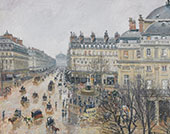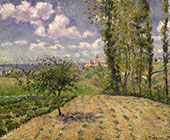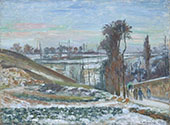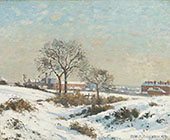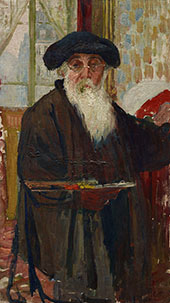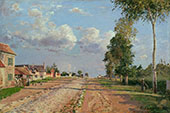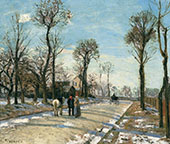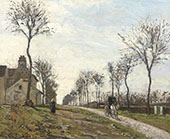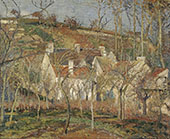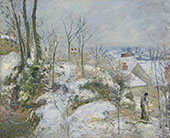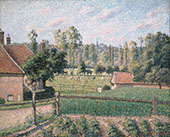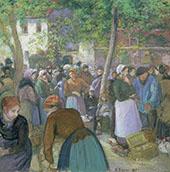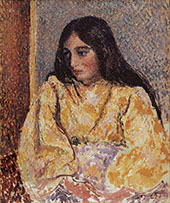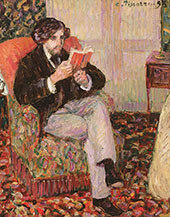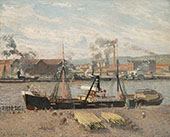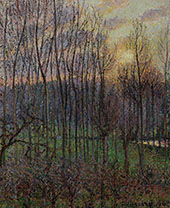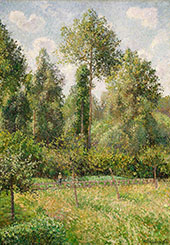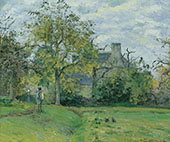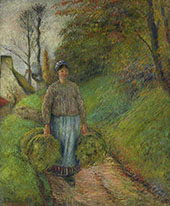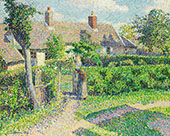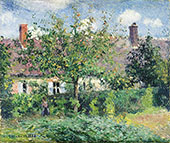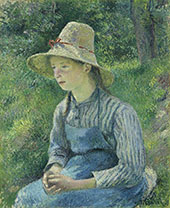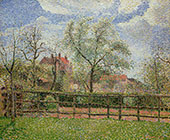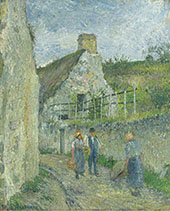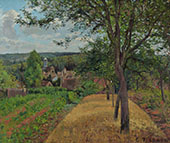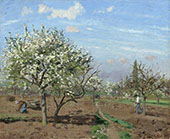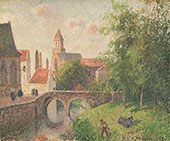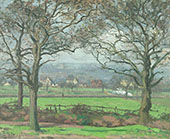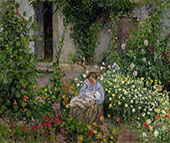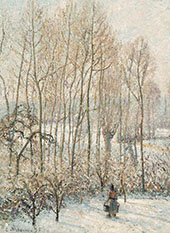Post Impressionism Oil Painting Reproductions
Find Post Impressionism Oil Painting Replicas By Post Impressionism Artists
Post Impressionist Paintings: A Brief Introduction
Post Impressionism art refers to the shift away from the Impressionist paintings of Claude Monet and his followers. Originating around 1886, the Post Impressionist artists flourished in late 19th and early 20th century France. In this brief introduction, we explore the origins of the Post Impressionist art movement, the defining characteristics of Post-Impressionist paintings, and present some of the most famous artists working in the genre.
Why is it called Post Impressionism?
Post-Impressionism art came from the British art critic and artist Roger Fry in 1906. He famously used it in 1910 to describe an Exhibition held at the Grafton Galleries, London, titled Manet and the Post-Impressionists. The movement is “post” impressionist because it came after the Impressionist group. This earlier group of artists, led by Pierre Auguste Renoir and Claude Monet, focus on “impressions” created from the ever-changing, moving nature of light and shade. The Post-Impressionists extended the Impressionist approach while casting aside its limitations. Indeed, many Post-Impressionists viewed Impressionist painting styles as overly trivial and decorative. Paul Cezanne once commented how he looked to “restore a sense of order and structure” to painting, aiming to make Modern Art more “solid and durable.”
What is Post Impressionism?
Post-Impressionism art initially referred to the developments pioneered by Paul Cezanne, often known as the father of Post-Impressionism. However, with his series of landscape paintings depicting Mont Sainte-Victoire in Aix en Provence, he transformed ideas about art and landscape paintings. Today, however, Paul Cezanne paintings do not appear massively revolutionary. Nonetheless, his saturated colors and simplified forms were utterly novel. Moreover, he pioneered Synthetism, aiming to combine artists’ observations of nature with their emotions.
Cezanne worked with basic shapes and flattened angular forms, perfectly exemplified in the Mont Sainte-Victoire series. These oil paintings on canvas pre-date later Cubism painting approaches. As a result, classical devotion to nature and direct representation was gone. In its place were the unique perspectives of individual artists.
What is the difference between Impressionism and Post Impressionism?
Impressionism and Post Impressionist artists were highly influential in France at the start and towards the late 19th century. However, the first Impressionist artists' exhibition occurred in 1874. These early Impressionist artists included figures such as Claude Monet, Edgar Degas, Berthe Morisot, Auguste Renoir, Camille Pissarro, and Mary Cassatt. They mainly created modern landscape paintings and depictions of everyday life. They ignored traditional mythological subjects and biblical narratives.
Instead, the Impressionists prioritized the fleeting impressions of light and movement. They emphasized the texture of paint on canvas, often flattening perspectives with strongly cropped compositions influenced by Japanese Ukiyo-e artists. The painting took place in en-Plein air, outdoors, as opposed to in a studio, with a color palette of pure, bright, and light colors. In terms of Impressionism versus Post Impressionism, the Post Impressionist artists ultimately reject naturalistic depictions of light and color. Instead, many Post-Impressionist paintings focus on symbolic meanings and unique compositions.
Mannerism art rejected Renaissance oil painting ideals stressing the “artificiality” of painting, while Post-Impressionists celebrated color and shapes in painting for their own sake. Instead of copying the natural world, color, and brushwork, they communicated emotions and universal truths.
What are Post Impressionism Characteristics?
The defining characteristics of Post-Impressionist paintings are:
- Rejection of natural light and color.
- An emphasis on symbolic or emotional meaning.
- Thick impasto paint appears in a free and expressive manner.
- A focus on “artificial” composition, often using geometric or distorted forms.
- The manipulation of artistic perspective enhances dramatic effects.
One painting exemplifying these main characteristics is the famous painting by Vincent Van Gogh, The Cafe Terrace on the Place du Forum. Painted in 1888 and also known as Van Gogh's The Night Cafe. This oil on canvas painting is saturated with a vivid yellow glow, and, unusually, it is also entirely devoid of the color black for a picture showing the night sky. When Van Gogh’s mental health deteriorated, the Starry Night painting was a form of emotional release for him. The highly controlled composition draws the viewer's eye toward the light-filled café, described by Van Gogh as a “pale sulfur, lemon green,” contrasting with the deep-blue and violet tones of the street and sky.
In other symbolic meanings, some scholars argue that the figures seated at the cafe evoke The Last Supper painting by da Vinci. Indeed, writing to his brother Theo, Van Gogh spoke of his “terrible need” for religion. In his religious quest, Vincent van Gogh went outside “to paint the stars” and “dream a painting.”
What is the focus of Post Impressionist artists?
Post Impressionist artists kept the focus on light and color but added extra layers of meaning and theory. While there are overall characteristics, there is no strict Post-Impressionist manifesto. Instead, each painter pursued their interests and stylistic approach. So, it’s worthwhile exploring the focus of some of the movement’s leading painters in turn:
- Paul Cezanne art aimed to transform traditional painting. Famously claiming, “I want to re-do Poussin from nature,” he removed the overly intellectual basis of French academic painting and emphasized feeling, color, and spontaneous emotion.
- George Seurat paintings focused on incorporating the latest scientific theories into his painting. Known as “pointillism” or “divisionism,” his small daubs and dabs of contrasting hues revolutionized color theory.
- Paul Gauguin colorful paintings keep the Impressionist’s use of bright luminescent coloring but reject approaches based on nature. Instead, they focus on imagination and feeling.
- Vincent Van Gogh impasto paintings are derived from nature but demonstrate an intensely personal use of color. His expressive, dappled brushwork communicated his inner world and described the world around him.
Why are Post Impressionism Paintings important?
Post Impressionist artists took European art into bold and unchartered territory. Nevertheless, they are essential for two main reasons. Firstly, Post Impressionism was necessary for the creative output the art movement inspired. Today, oil paintings by Van Gogh and Paul Gauguin are among the most famous oil paintings. Their paintings are prized for their sheer skill, imagination, and painterly brilliance and are universally celebrated.
Post-impressionism is not a fleeting artistic movement of little long-term significance. Images such as Van Gogh Starry Night painting, George Seurat Sunday Afternoon on the Island of La Grande Jatte, and The Scream by Edvard Munch are some of the most iconic paintings in Western art. Secondly, Post-Impressionism art influenced subsequent generations of artists. Their separation of art from naturalistic representation informed later Cubism paintings, Fauvism, and Expressionist art movements. Indeed, artists such as George Braque, a Cubist pioneer, also featured in some of the first Post-Impressionist exhibitions.
Who are the Famous Post-Impressionist artists?
While many artists contributed to Post-Impressionism, its most famous exponents are Paul Gauguin, Georges Seurat, Paul Cézanne, and Vincent Van Gogh. Because Post Impressionist artists usually avoided biblical narratives, the religious paintings of Paul Gauguin particularly stand out. With colorful artwork such as The Yellow Christ 1889, he combined Western Christian traditions with Primitive art and Symbolist approaches. Inspired by a crucifix in the village church Pont-Aven, Gauguin created the painting shortly after his disastrous stay with Vincent Van Gogh in Arles. The bold outlines and flat, bright colors represent Gauguin’s interest in primitive art. This oil on canvas painting predates his travels to Tahiti, which began in 1891.
Was Henri Rousseau a Post Impressionist?
In his famed publication “Post-Impressionism: From Van Gogh to Gauguin,” John Rewald included painters such as Odilon Redon and Henri Rousseau among Post-Impressionists. In the second volume (From Gauguin to Matisse), he featured artists such as Toulouse-Lautrec, Picasso’s early artworks, and the Les Nabis group. Amongst these artists, Henri Rousseau is an outlier; even for revolutionary Post-Impressionists, he is an outsider. While Henri Rousseau paintings included traditional genres, including landscapes, figurative paintings, and portraits, he transformed painting in odd and unbelievable ways.
Henri Rousseau was open to popular culture, such as magazine illustrations, novels, photographs, and postcards, in a way many artists of the time were not. His bold jungle paintings, most notably The Dream, imagined exotic lands reflecting the fears and desires of contemporary Paris. While Henri Rousseau never found full acceptance amongst Post-Impressionist circles, a younger generation of leading artists championed his art. Painters following Rousseau include Apollinaire, Robert Delaunay, and Pablo Picasso, who all admired Rousseau’s brave artistic freedom.
Post Impressionism Art: Famous Oil Paintings Reproductions
Explore our extensive collection of fine art reproductions to enjoy the colorful energy of Post Impressionism oil paintings. Whether it’s Paul Gauguin's religious paintings, Van Gogh’s painting Starry Night, or Seurat’s iconic pointillism paintings, discover famous painting replicas for sale in our extensive catalog.
Cannot Find What You Are Looking For?
Reproduction Gallery Information
Customer Service
(Send Us A Message)
Tel: (503) 937 2010
Fax: (503) 937 2011

